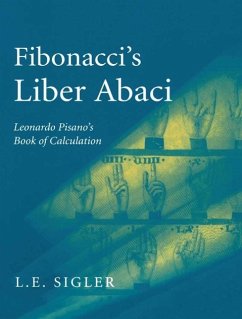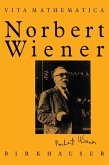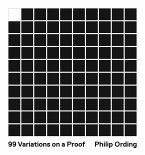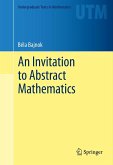First published in 1202, Fibonacci's Liber abaci was one of the most important books on mathematics in the Middle Ages, introducing Arabic numerals and methods throughout Europe. Though it is known as an introduction to the Hindu number system and the algorithms of arithmetic that children now learn in grade school, "Liber abaci" is much more: an encyclopaedia of thirteenth-century mathematics, both theoretical and practical. It develops the tools rigorously, establishing them with Euclidean geometric proofs, and then shows how to apply them to all kinds of situations in business and trade - conversion of measures and currency, allocations of profit, computation of interest, alloying of currencies, and so forth. It is rigorous mathematics, well applied, and vividly described.
From the reviews:
...this is an amazing book, and it is somewhat frustrating that we had to wait for the 800th anniversary of its original publication to see an English translation. But here it is at last, the Liber Abaci in English. It is now possible for mathematicians who are interested in history to read it, and for students to read portions of it in their history courses...[Fibonacci] was a great mathematician, and here is an accessible and readable edition of his most famous book. Don't miss the opportunity to get a copy.
Fernando Q. Gouvea, MAA Online
The Liber abbaci of Leonardo Pisano (today commonly called Fibonacci) is one of the fundamental works of European mathematics. No other book did more to establish the basic framework of arithmetic and algebra as they developed in the Western world...its position as the only modern text of this fundamental work will make this translation an essential part of any collection in the history of mathematics.
- Warren Van Egmond, Mathematical Reviews
...Even the Latin original has been hard to find outside the rare book room...But now this cornerstoneof mathematical culture has finally become widely available with the appearance of Fibonacci's 'Liber Abaci': A Translation into Modern English of Leonardo Pisano's Book of Calculation.
- American Scientist
From the reviews:
...this is an amazing book, and it is somewhat frustrating that we had to wait for the 800th anniversary of its original publication to see an English translation. But here it is at last, the Liber Abaci in English. It is now possible for mathematicians who are interested in history to read it, and for students to read portions of it in their history courses...[Fibonacci] was a great mathematician, and here is an accessible and readable edition of his most famous book. Don't miss the opportunity to get a copy.
Fernando Q. Gouvea, MAA Online
The Liber abbaci of Leonardo Pisano (today commonly called Fibonacci) is one of the fundamental works of European mathematics. No other book did more to establish the basic framework of arithmetic and algebra as they developed in the Western world...its position as the only modern text of this fundamental work will make this translation an essential part of any collection in the history of mathematics.
- Warren Van Egmond, Mathematical Reviews
...Even the Latin original has been hard to find outside the rare book room...But now this cornerstoneof mathematical culture has finally become widely available with the appearance of Fibonacci's 'Liber Abaci': A Translation into Modern English of Leonardo Pisano's Book of Calculation.
- American Scientist
Dieser Download kann aus rechtlichen Gründen nur mit Rechnungsadresse in A, B, BG, CY, CZ, D, DK, EW, E, FIN, F, GR, HR, H, IRL, I, LT, L, LR, M, NL, PL, P, R, S, SLO, SK ausgeliefert werden.
"Leonardo of Pisa's Liber Abaci (Book of Calculation) is one of the most important books in the history of European mathematics. Leonardo learned his mathematics from the Islamic mathematical tradition (some have even argued that he should be considered part of that tradition), but he wrote his books in Latin. As a result, he became one of the most important mediators of that tradition to European readers. The Liber Abaci focused on "calculation." From our point of view, most of the contents are either arithmetic or algebra. It starts off with an extensive and detailed discussion of the use of "the nine Indian figures" to represent numbers and to perform arithmetical operations with them. The "nine figures" are, of course, 1, 2, 3, 4, 5, 6, 7, 8, and 9, with 0 being treated as a separate sign. The book then goes on to deal with a large number of problems that we would describe as algebraic. Most of these reduce to linear equations (this includes systems of linear equations and also linear diophantine equations). The final chapter discusses quadratic equations. All of this is done, of course, without any sort of algebraic symbolism. As Heinz Lueneberg has pointed out in a recent issue of FOCUS, this is an amazing book, and it is somewhat frustrating that we had to wait for the 800th anniversary of its original publication to see an English translation. But here it is at last, the Liber Abaci in English. It is now possible for mathematicians who are interested in history to read it, and for students to read portions of it in their history courses. One final comment: attentive readers will note that the name "Fibonacci" does not occur in this brief review. That is because Leonardo never used that name: it is a nickname given to him by a 19th century historian of mathematics. I'm enough of a purist to want to refer to Leonardo as he referred to himself: Leonardo of Pisa, of the Bonacci family. He was a great mathematician, and here is.
From the reviews:
"Leonardo of Pisa's Liber Abaci (Book of Calculation) is one of the most important books in the history of European mathematics. Leonardo learned his mathematics from the Islamic mathematical tradition (some have even argued that he should be considered part of that tradition), but he wrote his books in Latin. As a result, he became one of the most important mediators of that tradition to European readers.
The Liber Abaci focused on "calculation." From our point of view, most of the contents are either arithmetic or algebra. It starts off with an extensive and detailed discussion of the use of "the nine Indian figures" to represent numbers and to perform arithmetical operations with them. The "nine figures" are, of course, 1, 2, 3, 4, 5, 6, 7, 8, and 9, with 0 being treated as a separate sign. The book then goes on to deal with a large number of problems that we would describe as algebraic. Most of these reduce to linear equations (this includes systems of linear equations and also linear diophantine equations). The final chapter discusses quadratic equations. All of this is done, of course, without any sort of algebraic symbolism.
As Heinz Lueneberg has pointed out in a recent issue of FOCUS, this is an amazing book, and it is somewhat frustrating that we had to wait for the 800th anniversary of its original publication to see an English translation. But here it is at last, the Liber Abaci in English. It is now possible for mathematicians who are interested in history to read it, and for students to read portions of it in their history courses.
One final comment: attentive readers will note that the name "Fibonacci" does not occur in this brief review. That is because Leonardo never used that name: it is a nickname given to him by a 19th century historian of mathematics. I'm enough of a purist to want to refer to Leonardo as he referred to himself: Leonardo of Pisa, of the Bonacci family. He was a great mathematician, and here is an accessible and readable edition of his most famous book. Don't miss the opportunity to get a copy."
MAA Online, March 2003
"The Liber abaci of Leonardo Pisano (today commonly called Fibonacci) is one of the fundamental works of European mathematics. No other book did more to establish the basic framework of arithmetic and algebra as they developed in the Western world.
...its position as the only modern text of this fundamental work will make this translation an essential part of any collection in the history of mathematics."
MathSciNet
" . . . Even the Latin original has been hard to find outside the rare book room . . . But now this cornerstone of mathematical culture has finally become widely available with the appearance of Fibonacci's 'Liber Abaci': A Translation into Modern English of Leonardo Pisano's Book of Calculation."
AMERICAN SCIENTIST
"This book is the translation of Baldassarre Boncompagni's Latin edition published in Rome in 1857. This is the first and so far the only translation to a modern language of an important rarity. ... The titles of the chapters describe the topics quite well. ... this important book should be on the shelves of anyone interested in history, culture, mathematics and the interaction of these basic human values." (Peter Hajnal, Acta Scientiarum Mathematicarum, Vol. 70, 2004)
"Leonardo of Pisa's Liber Abaci (Book of Calculation) is one of the most important books in the history of European mathematics. Leonardo learned his mathematics from the Islamic mathematical tradition (some have even argued that he should be considered part of that tradition), but he wrote his books in Latin. As a result, he became one of the most important mediators of that tradition to European readers.
The Liber Abaci focused on "calculation." From our point of view, most of the contents are either arithmetic or algebra. It starts off with an extensive and detailed discussion of the use of "the nine Indian figures" to represent numbers and to perform arithmetical operations with them. The "nine figures" are, of course, 1, 2, 3, 4, 5, 6, 7, 8, and 9, with 0 being treated as a separate sign. The book then goes on to deal with a large number of problems that we would describe as algebraic. Most of these reduce to linear equations (this includes systems of linear equations and also linear diophantine equations). The final chapter discusses quadratic equations. All of this is done, of course, without any sort of algebraic symbolism.
As Heinz Lueneberg has pointed out in a recent issue of FOCUS, this is an amazing book, and it is somewhat frustrating that we had to wait for the 800th anniversary of its original publication to see an English translation. But here it is at last, the Liber Abaci in English. It is now possible for mathematicians who are interested in history to read it, and for students to read portions of it in their history courses.
One final comment: attentive readers will note that the name "Fibonacci" does not occur in this brief review. That is because Leonardo never used that name: it is a nickname given to him by a 19th century historian of mathematics. I'm enough of a purist to want to refer to Leonardo as he referred to himself: Leonardo of Pisa, of the Bonacci family. He was a great mathematician, and here is an accessible and readable edition of his most famous book. Don't miss the opportunity to get a copy."
MAA Online, March 2003
"The Liber abaci of Leonardo Pisano (today commonly called Fibonacci) is one of the fundamental works of European mathematics. No other book did more to establish the basic framework of arithmetic and algebra as they developed in the Western world.
...its position as the only modern text of this fundamental work will make this translation an essential part of any collection in the history of mathematics."
MathSciNet
" . . . Even the Latin original has been hard to find outside the rare book room . . . But now this cornerstone of mathematical culture has finally become widely available with the appearance of Fibonacci's 'Liber Abaci': A Translation into Modern English of Leonardo Pisano's Book of Calculation."
AMERICAN SCIENTIST
"This book is the translation of Baldassarre Boncompagni's Latin edition published in Rome in 1857. This is the first and so far the only translation to a modern language of an important rarity. ... The titles of the chapters describe the topics quite well. ... this important book should be on the shelves of anyone interested in history, culture, mathematics and the interaction of these basic human values." (Peter Hajnal, Acta Scientiarum Mathematicarum, Vol. 70, 2004)









